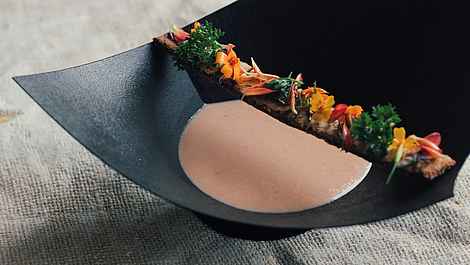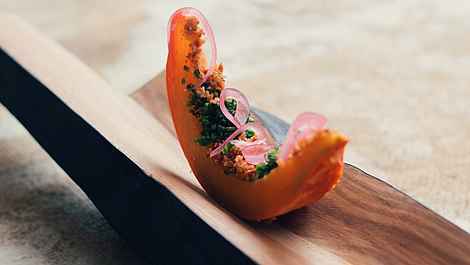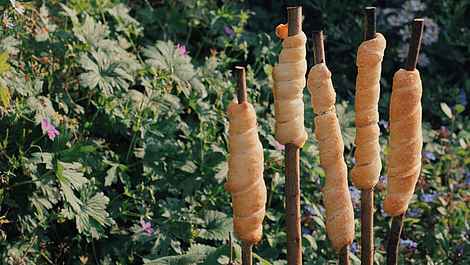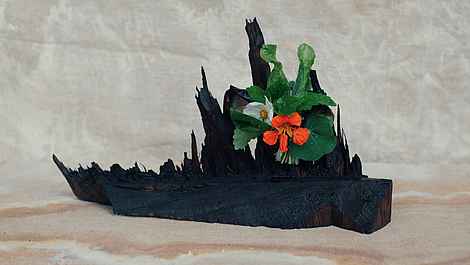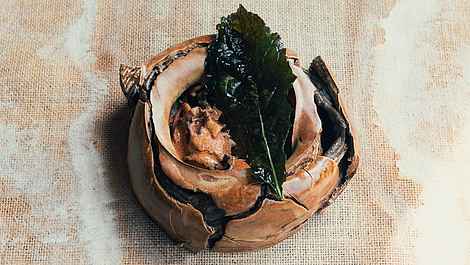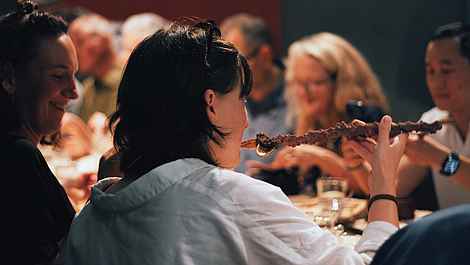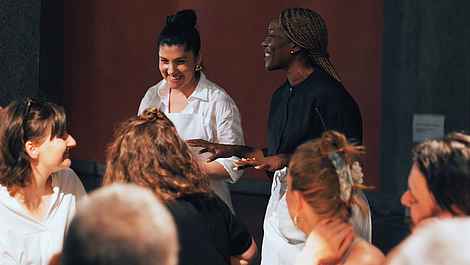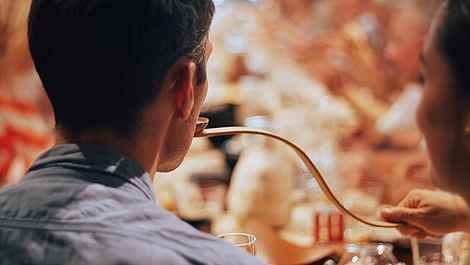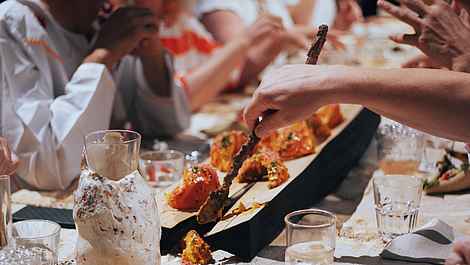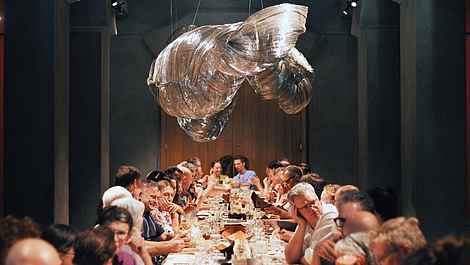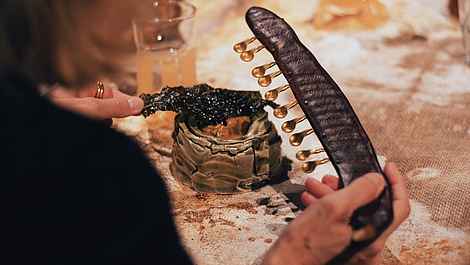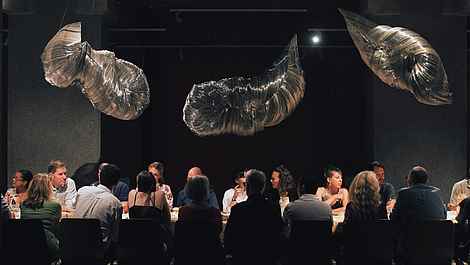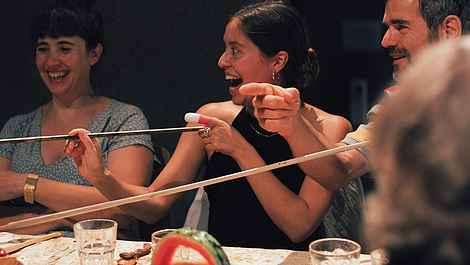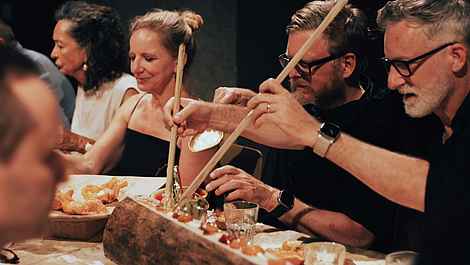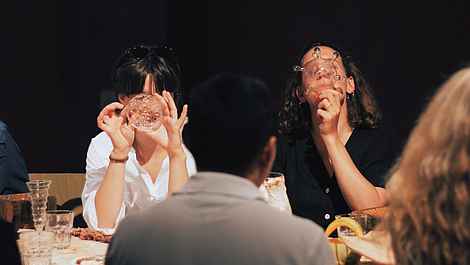To mark the 100th anniversary of biodynamic agriculture, top chefs Elif Oskan and Selassie Atadika, together with artists and art students from the Lucerne University of Applied Sciences and Arts, transformed the Goetheanum into a paradise for the senses. The events on the evenings of 30 and 31 August 2024 were part of the experimental gastronomy format Steinbeisser and offered an experience that went far beyond the conventional dining experience.
Playful encounters
Instead of traditional forks and glasses, guests were greeted with artistically designed eating utensils created by artists and students from the Lucerne University's Object Design Bachelor’s program. These objects turned the guests' habits upside down, enabling a completely new dining experience. "We want to offer participants a new perspective on their eating culture," explained Martin Kullik, co-founder of Steinbeisser.
All 70 participants sat at a large table, experimenting together with how the delicacies served could be eaten using the unconventional utensils. For instance, wooden spoons created by Alena Kelm required two people to use them, doubling the fun of eating. Imagination and humor were essential, quickly creating a warm and playful atmosphere that brought together people from different backgrounds.
Biodynamic and regional
Elif Oskan, known for her restaurant "Gül" in Zurich, and Selassie Atadika, a pioneer of New African Cuisine from Accra, Ghana, created an entirely plant-based menu using biodynamic ingredients from the Goetheanum garden and organic products from the region. It’s no surprise that haute cuisine often turns to biodynamic ingredients, as they are known for their superior flavor, thanks to balanced growth and ripening processes and pesticide-free cultivation. Jean-Michel Florin, former co-head of the Agriculture Section at the Goetheanum, sees the collaboration with Steinbeisser and the two top chefs as an ideal way to present the principles of biodynamic farming in a new and artistic way.
Biodiversity on the plate
In addition to the artistic and culinary experience, ethical issues were also addressed. Our consumption habits significantly contribute to the destruction of biodiversity. The artists reflected this in their design objects: materials had to be renewable, and the production processes sustainable. An example was the artwork "Eat like a Bark Beetle" by Lia Chiara Burkhart, where diners scraped their food from carved wood – a homage to the bark beetle. Instead of being viewed as a pest, the beetle was portrayed as an important actor in nature, enriching the ecosystem.
A lively Goetheanum
The Goetheanum seemed the perfect venue for Steinbeisser's project, not only because the values of Steinbeisser and biodynamic agriculture align but also because the sustainably crafted art objects made from natural materials harmonized with the organic architecture of the Goetheanum.
The Steinbeisser evenings at the Goetheanum demonstrated that food is far more than mere sustenance: it can be a deep, sensual experience that allows us to rediscover our connection to fellow humans, to art, and to nature. It is hoped that such events will continue in the future, helping to raise awareness about sustainable and biodynamic farming.
The future of food culture
In a world where sustainability is becoming increasingly important, biodynamic agriculture can make a significant contribution. It not only offers solutions to the pressing ecological issues of our time but also creates space for new aesthetic and sensory experiences. The evenings at the Goetheanum were a powerful example of how these principles can be put into practice – and how they can help us fundamentally rethink our relationship with nature and food. Guests left not only with full stomachs but also with new insights and reflections on what was on their plates – and beyond.
